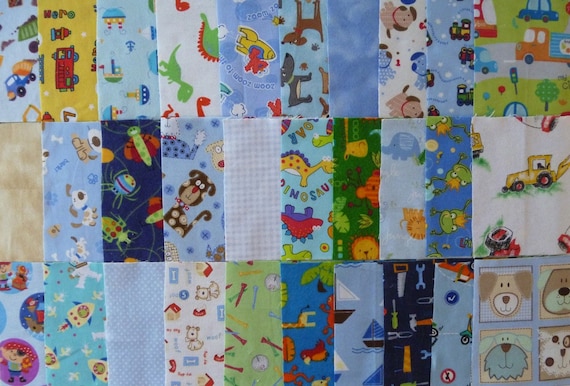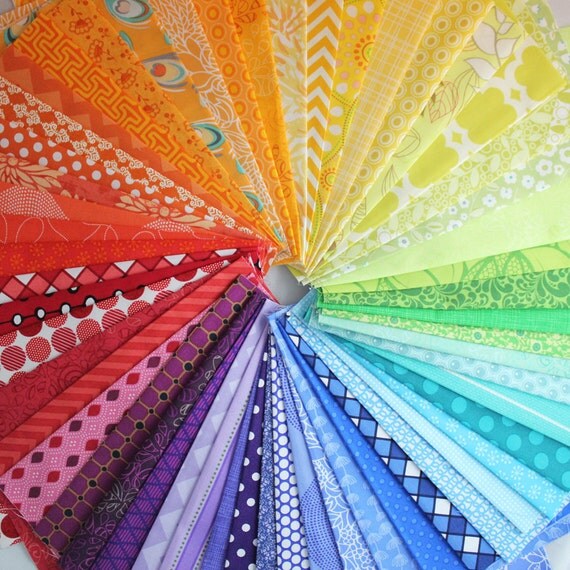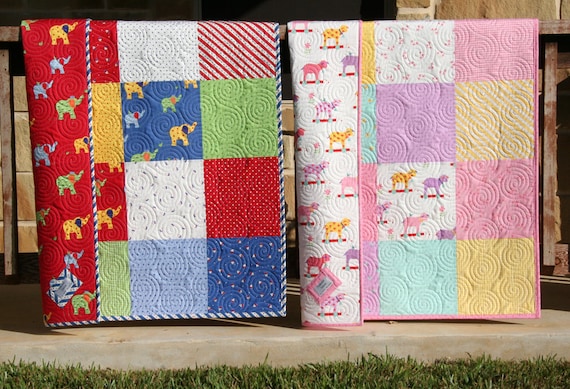In this first post, I want to talk about things to think about before starting a charity quilt. I know this is stuff you all know and do, but maybe there is someone out there new to quilting who will find this information helpful.
Quality
"Quick & Easy" Charity Quilts doesn't mean "Fast & Trashy." The last thing someone who's life is falling apart needs is a blanket that falls apart too. :)
Make sure you are using good quality material that won't fray or shred. Designer fabric isn't a must, but make sure whatever fabric you use will stand up to lots of love and machine washing and drying.
Make sure the stitching is secure and none of the seams are pulling apart. If you are making quilts with beginning sewers, you may want to consider using 1/2 inch seams instead of standard 1/4 inch seams. A 1/4 inch seam that goes a bit crooked is more likely to pull apart than a 1/2 inch seam that is a bit off.
Size
Make sure the size of the quilt is appropriate for the person it is going to. If the quilt is designed for a child a good rule of thumb is for the quilt to be approximately 6 inches longer than the child is tall. That way the child is able to curl up completely under the blanket and there is some room for growth. Boston Children's Hospital has some general height ranges for children here on their website. Quilts for those 12 and over should be close to twin sized.
Fabric
Now we are coming to the fun part! (Like the fabric or quilt? Click on the source link to go to the store selling it!)
 |
| Source |
 |
| Source |
 |
| Source |
 |
| Source |
Read the Fine Print - If you are donating a quilt to a specific organization be sure you know if they have any specific requirements. I know of some places that don't accept quilts made from denim and who require a 1/2 inch seam allowance and others who specify that they want quilts made only from new quilting cotton. Make sure you give what is needed and required.
 |
| Source |
Now that we have the basics covered we are ready to get quilting! See you soon with our first tutorial!

.jpg)
Great info, I do charity quilts and I always make sure we have quilts for men and boys. I love it when I get plaid fabric. Blackbird design had a nice pattern for plaid on their site partnering with Moda.
ReplyDeleteGreat info. Thanks for sharing.
ReplyDeleteThis is a GREAT post, Leila. Btw, is there a deadline for the foster care kit blankets?
ReplyDelete